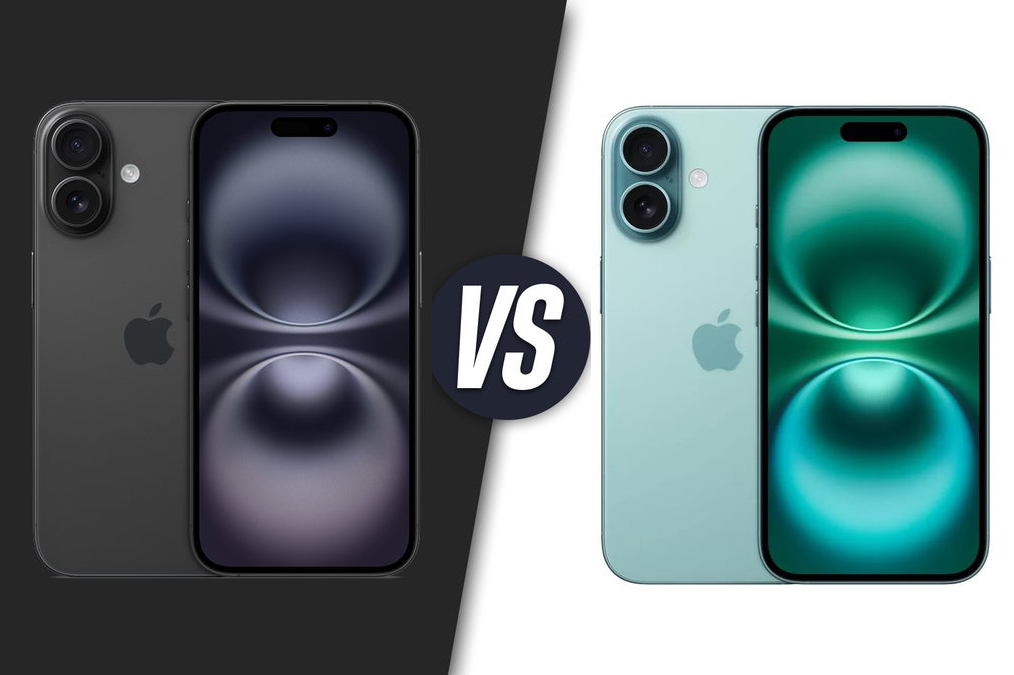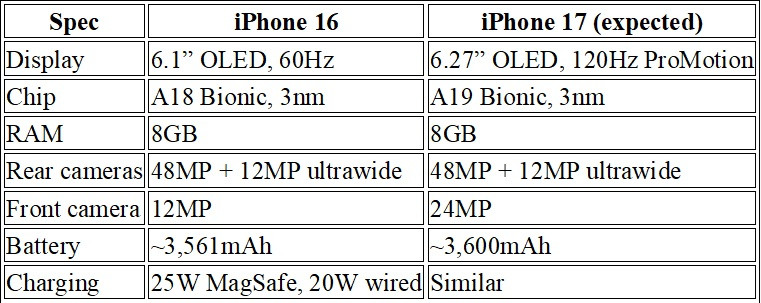With iPhone 17 just around the corner, Apple promises significant changes in design, display upgrades, and improved front-facing camera performance. But are these enhancements enough to make it truly superior to the iPhone 16?

iPhone 16 introduced a few interesting features, including a new Camera Control button, the faster A18 chip, and minor camera improvements. Still, many users feel these updates fall short of expectations.
The iPhone 16 retains a dated 60Hz screen, nearly identical design, and lacks AI features at launch - and still does. As a result, it’s seen as more of a routine refresh than a meaningful step forward.
All eyes are now on the iPhone 17, which is expected to bring a bold new design, a long-overdue screen upgrade, and a higher-resolution selfie camera. Here’s a detailed comparison of what to expect between the two models.
Design and dimensions
Could the base iPhone finally get a 120Hz display?
iPhone 16 sticks closely to Apple’s familiar design formula, with minor tweaks like vertically aligned rear cameras for spatial video recording and the addition of the Camera Control button. Though pressure-sensitive and useful for zooming and focusing, many users find the button’s placement awkward and nonessential.
In contrast, the iPhone 17 is expected to feature a more notable design overhaul. A new bonding process will create a smoother transition between the metal frame and glass back, eliminating sharp edges and offering a more comfortable grip.
Apple will also reduce bezel size significantly using BRS (Border Reduction Structure) technology, making the display appear more immersive without increasing the phone’s footprint.
The iPhone 17 is likely to retain the same color options as its predecessor (black, white, pink, mint green, ultramarine blue), with possible new shades to come.
Display upgrades
The iPhone 16 features a 6.1-inch OLED screen with 60Hz refresh rate - unchanged for years. While its 2000-nit peak brightness offers good outdoor visibility, it lags far behind rivals like Samsung and Google in smoothness and responsiveness.
The iPhone 17 is rumored to bump up to a 6.27-inch OLED M14 panel from Samsung with 120Hz ProMotion support. This would dramatically improve scrolling, responsiveness, and battery efficiency, while potentially increasing screen brightness.
Some rumors also suggest Apple could bring Always-On Display to the standard version, though this remains unconfirmed.
Performance and software
iPhone 16 launched with the A18 Bionic chip built on TSMC’s 3nm N3E process. It offers solid performance and improved sustained workloads, thanks to a new aluminum thermal system. The A18 also supports 16-core Neural Engine and hardware-based ray tracing, setting the stage for future Apple Intelligence features.
iPhone 17 will debut the A19 chip, still on 3nm, but optimized for better energy efficiency and on-device machine learning. RAM is expected to remain at 8GB.
Both devices will run iOS 19 at the iPhone 17’s release, though Apple Intelligence features may not be available until late 2025 or early 2026.
Camera systems
The rear cameras on both models are expected to be quite similar. However, the iPhone 17 will bring a significant leap in the front camera department.
iPhone 16 camera specs: 48MP main (f/1.6, default 24MP photos), 12MP ultrawide (f/2.2, autofocus, macro support), 12MP front-facing (f/1.9).
Expected iPhone 17 specs: 48MP main (possibly better image processing), 12MP ultrawide, and a new 24MP front camera.
The 24MP selfie shooter will be a big upgrade for selfie enthusiasts and video callers. Still, the lack of a telephoto lens - reserved for Pro models - remains a drawback.
Battery life and charging
iPhone 16 packs a 3,561mAh battery, offering solid endurance across web browsing, video, and gaming. It supports faster 25W MagSafe wireless charging, while wired charging remains around 20W.
iPhone 17 may slightly increase capacity to around 3,600mAh and benefit from a more efficient chip and display. It might also use a stacked battery design to improve longevity and reduce heat buildup, though wired and wireless charging speeds are expected to remain unchanged.
Comparison table: iPhone 17 vs iPhone 16 (expected)

The iPhone 17 is shaping up to be the phone that the iPhone 16 should have been. Its 120Hz ProMotion display, thinner bezels, upgraded selfie camera, and refined design promise a genuinely modern feel after years of stagnation.
Performance-wise, the A19 chip will offer modest gains over the A18, but not game-changing improvements. Battery and charging upgrades are incremental.
If you're using an iPhone 16 and are satisfied with its performance, cameras, and screen, upgrading may not be essential. But if you own an older model or are tired of the sluggish 60Hz display, the iPhone 17 could be worth the wait.
However, Apple’s continued delay in delivering promised AI features - once a major selling point for iPhone 16 - is disappointing. It would be even more frustrating if iPhone 17 also launches without Siri 2.0 or any tangible Apple Intelligence capabilities.
Hai Phong (PhoneArena, Macrumors)